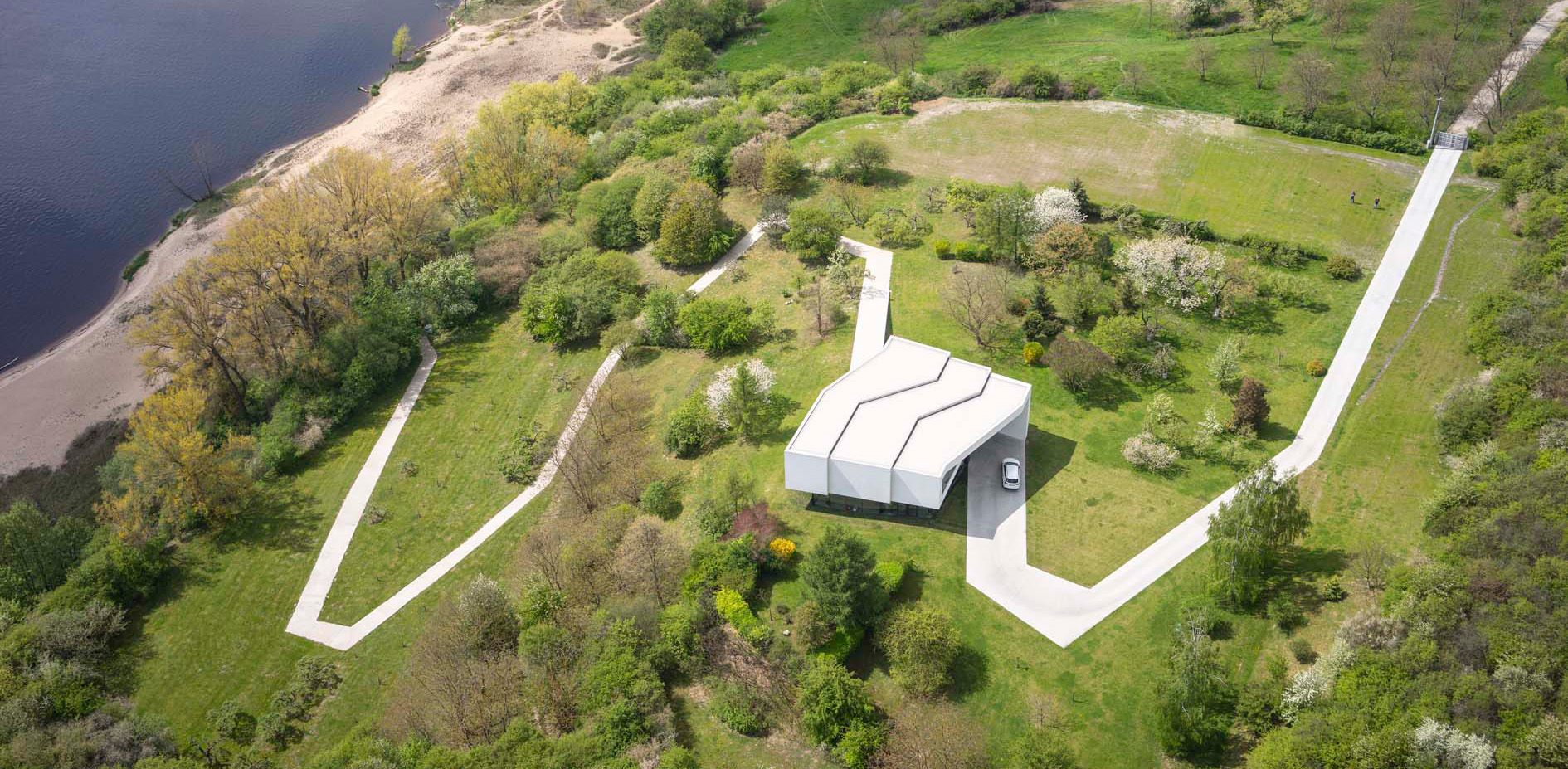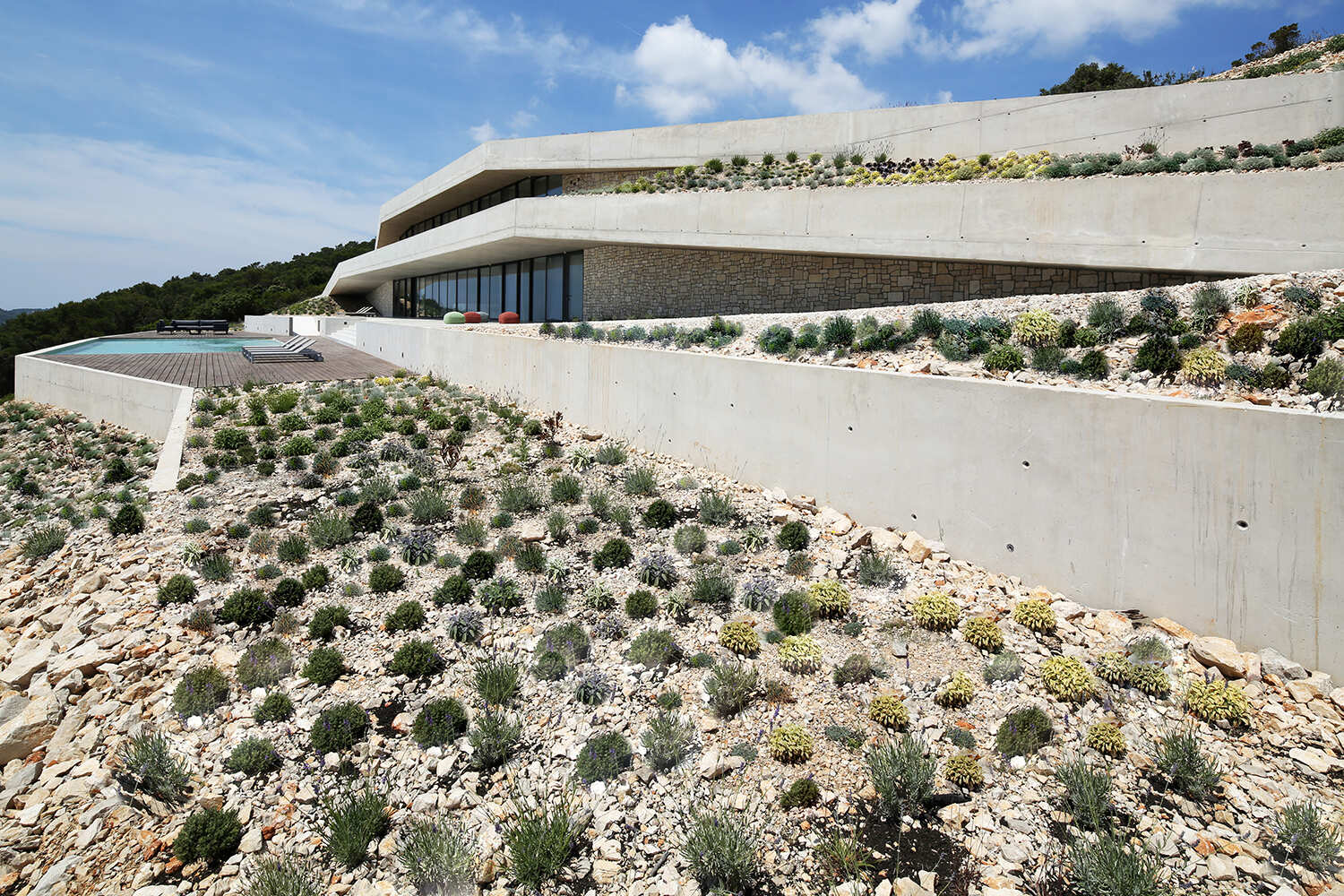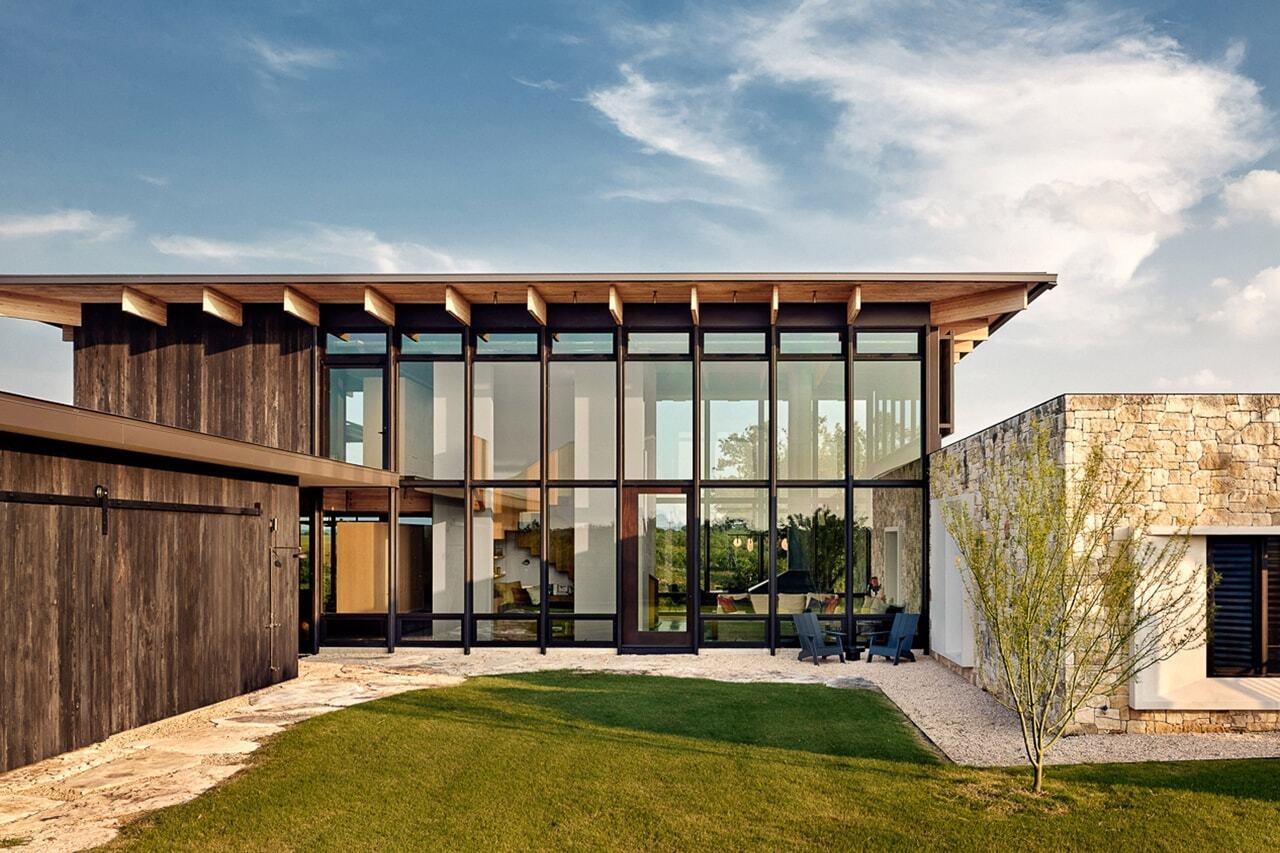Atelier Garcia "honors the monolith" with Concrete House in Colombia


New York-based Atelier Garcia has constructed a triangular concrete house on a hillside in the mountains of Guatapé, Colombia, with a view of the landmark Rock of El Peñol.
The 120-square metre (1290-square foot) residence sits on a high point of a steep 3.5-acre site in Antioquia.
Rather than an imposing rectangular form, the triangular house follows the natural contours of the mountain, creating a dialogue with the immediate site while preserving views of the distant landscape.

"Concrete – understood as liquid rock – echoes the presence of the Rock of El Peñol, not just through its materiality but also in its role as a belvedere honoring the monolith," Atelier Garcia told Dezeen.
"The Concrete House presented a delightful challenge – an opportunity to honor the natural topography, positioning the building to capture the surrounding landscape while minimizing supports for the roof terrace to maintain unobstructed views."

The triangular shape allowed the design to minimise excavation and preserve the natural terrain.
Functioning as a belvedere, the house includes several viewing spaces with the lower level connecting to sloping gardens, the living area directed toward a reservoir and the rooftop opening to a panoramic view.

"The result is an abstract composition that seeks to honor and complement the site," the studio said.
"We were interested in conceiving the structure of the house in a way that it not only serves its load-bearing function but also becomes the primary generator of space, shaping the light qualities of the interior while incorporating architectural elements like the fireplace."

The program is distributed within a concrete plinth that is partially embedded in the hillside.
This created a cave-like enclosure for the lower-level bedrooms and allowed the upper social spaces to be open to views.

A sinuous exterior path leads to a bridge that provides access to the circular roof terrace.
The overlapping geometries were made possible by the fluidity of concrete – however, the site wasn't accessible for a concrete mixer. This required the material to be carried up the hill bucket by bucket.

Yet studio founders Orlando García and Clara Arango selected board-formed concrete for its endurance and permanence.
"There's a quiet honesty in bare materials that we find deeply calming to the soul," the studio said. "Another unique challenge was shaping the curvature of the stair enclosure using horizontal wooden formwork—a demanding process that required both precision and craft."
Used not only as structure but also as furniture and finish, concrete is the defining texture of the house, juxtaposed by lightweight metal railings that trace the perimeters of the balconies.
The concrete acts as a thermal mass, regulating temperature fluctuations from day to night and working with the area's mild climate. Oriented toward the southwest, the strategic overhangs reduce solar gain through the floor-to-ceiling glazing.

"These strategies ensure that the house remains comfortable and energy-efficient throughout the year, all while maintaining a minimal environmental footprint," the studio said.
Other residential projects recently completed in Colombia include a perforated concrete and brick house in La Siria by Plan:b Architecture and a lofted wooden cabin set above the Andean Moorland by ZITA.
The photography is by Mateo Soto.
Project credits:
Architects: Clara Arango + Orlando García. Atelier García
Structural Design: Cydeca
Contractor: ICP
The post Atelier Garcia "honors the monolith" with Concrete House in Colombia appeared first on Dezeen.




















































